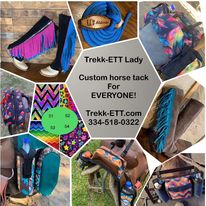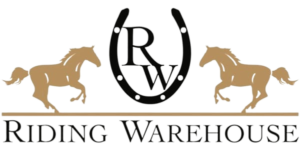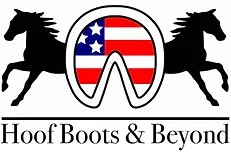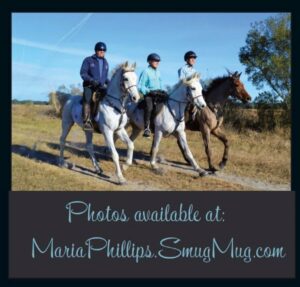Endurance Riding Requires Courage and Perseverance of Horse and Rider By ROBIN STANBACK
Electrolytes- Rider 15 Ways to Maximize Your Endurance
- Drink before you’re thirsty.
- Avoid dehydration-induced fatigue by drinking before, during and after rides.
- On a warm day, drink at least 1 litre of liquid per hour.
- Consider using sports drinks – dilated by half with water. Their sugar content can help replenish calories while quenching your thirst.
- Eat carbohydrate-rich meals (pasta, rice, etc.) during the 3 days before the event. Have fruit, oatmeal, cereal and bread for breakfast
- Don’t eat foods high in sugar just before a ride because your body’s insulin response may cause weakness and dizziness.
- During the ride, eat before you’re hungry. Bananas, dates and cookies with fruit are excellent.
- Eat lightly, but steadily, if possible. Don’t stuff yourself at stops.
- Ride properly. Sit up straight. Stay balanced and light on your horse.
- Divide the ride into segments and prepare a strategy for each.
- If fatigue sets in, don’t dwell on the miles remaining. Instead, concentrate on your form, your horse’s efficiency of motion and drinking and eating adequately. Rest if necessary, but don’t stop for more than 10 minutes.
- Be prepared for the trail. Before the ride and at vet checks, ask about the trail ahead.
- Wear comfortable cloths. Wear a hat to combat sun stroke. Wear sun glasses to protect your eyes and reduce fatigue from glare.
- Ride with a friend who has a similar time goal. The companionship and conversation will help the miles pass more quickly.
- When the going gets tough, tell yourself, “I can do it. Other riders have done this before and I can succeed too.”
Clothing Tips!
Boots: Consider water proof or resistant boots. Even the dew you walk through doing chores can soak through many boots. And, if you plan to ride anywhere you may have to cross water, I suggest knee high rubber English type boots. If you think the water may go over the boots, duct tape around the tops to your pants. IMO there’s nothing worse than riding with water sloshing in my boots, soaking my socks and feet. Any boots but the rubber ones should have steel shanks or some type of really good arch support. Any boot you buy should be comfortable enough to walk in should the occasion arise. So make sure they fit well.
Socks: I advise cool max type. In white. They will dry on you quickly. Cotton and wool take forever to dry. And colored socks are conducive to causing athlete’s foot. In very cold weather have foot warmers. Some are battery powered and reusable, most are squeezed to start the reaction to release heat and placed in the boot with the foot.And/or, plan on wearing panty hose or silk sock liners.
Jeans: Unless you plan to ride in full cowboy type chaps or wear panty hose I would not recommend even a short ride in jeans with seams. Too much chance of chaffing. Stretch riding jeans are worth every penny. Jeans with no stretch can be miserable when you go to mount that 15 or 16 hand horse. They are also, due to the material they are made from, not quick drying and can hold moisture for a very long, miserable time.
Other pants/breeches: I prefer to wear so-called “English” type riding tights or breeches. Some are even padded in areas that contact the saddle for the long distance rider. These do not have seams in awkward places and the material they are made of should preferably be quick drying for those unavoidable rainy days and dunks into the pond or creek.
Chaps: I like full chaps for rugged brush riding or where I might be in close quarters and hit my leg of knee on a tree or outcropping or rock. Leggings are fine for easier terrain and riding breeches. They aren’t very easy to put on over jeans as they are not made for jeans. Also available are shotgun chaps. These cover from the waist of the rider down to just over the knee. I wouldn’t recommend them in rough terrain where the lower legs might be at risk.
Jackets, etc. for the cold/rain/and so on: Remember, the key to keeping warm and dry is layers. Several thin layers is much better than one or two thick, cumbersome layers. The inner layer should be of a wicking material to allow sweat to escape when you become heated, and you will become heated doing chores and/or riding hard. I prefer a sleeveless t-shirt type garment, then a long john type top, a sweat shirt then a vest. You need to be able to peel off upper layers as the day warms. On the lower body foot wear as I mentioned above (panty hose, socks, then long john bottoms, my riding pants). I wear water and wind resistant pants. And if it’s rainy I have Frogg Togg pants and windbreaker to go over all my clothes. Frogg Toggs are made out of recycled paper and are amazingly wind and rain resistant. A hat or head cover is important in cold and/or rain. I ride in a helmet. I have a polar tech headliner over which my helmet fits. If it’s raining I add my rain resistant helmet cover over my helmet and I have a wide velco brim I can attach to the helmet to keep the rain off my face. I also have a ski type mask to wear over my face for temps of 25 or below. Some folks wear ear muffs, but I prefer my “skull cap” under my helmet as noted above. I wear lightweight gloves to protect my hands from the sun, reins, rain and injury. In winter I wear polar tech-lined gloves and over them my fingerless wool blend gloves. I also recommend these fingerless gloves when doing chores requiring fine finger movements and when saddling and bridling the horse. Some folks use silk liners under their gloves.
All clothes worn should allow the rider to move freely without restricting movement or causing discomfort.
Bandana: I find this to be very useful. It protects my neck, especially in summer, from the sun. It keeps the cold and wind off my neck. I can soak it in water and get a cool down by tying it wet around my neck. It can be drawn up over the mouth and nose when things get dusty. And it can be used to tie things to the saddle if need be.
Belt: I like belts because you can put things on them such as leather man tool, cell phone, etc. You don’t want to put items like these on your saddle since you may, at some point, become separated from that saddle. And they can be used in an emergency to bind fractured limbs and to replace a stirrup leather in some cases.
Undergarments: For the ladies always wear a bra, a GOOD support bra. I don’t care how small you are nor how smooth your horse, here will come a time when you will be glad you have it on. I like cool max here, too. And underpants for both men and women should be cool max type and snug so they don’t show under the tight jeans or breeches. Seams should be minimal.
Good sunglasses, wrap around, UVA/UVB blocking. An absolute necessity for those of us with contacts and good idea for every one else to protect from dust, rain (provided you have a wide visor on your hat/helmet) and from wayward branches that we all duck under from time-to-time.
Body armor: To protect the trunk from impact injuries.
Keep it simple! by The running, riding, writing veterinarian Blog created by Melinda Faubel Newton, certified AERC control judge.
Food – A Compilation of What Riders Eat at Competitions- Submitted by Glenda R. Snodgrass – grs@TheNetEffect.com
ELECTROLYTES, ETC by Cherry Stockton has been competing athletically for 30+ years. She won her age division and placed 7th overall in the Hawaii Ironman: she is in the Women’s Motorcycle Hall of Fame; she, along with her teammate Laurra Maddock, is the only two woman team to finish the Baja 1000 Motorcycle Race; she has been competing in Endurance Racing since 1986
When The Heat Is On – how to stay cool while exercising in hot weather – Vibrant Life, July-August, 1994 by Robert D. Lee
Lifesaving Horseback-Riding Helmet Tips – Your head is vulnerable if you tumble from the height of a horse. Here’s how your riding helmet can cushion the fall.
Why Horses Kick – By Jennifer Williams, PhD. Here’s what your horse’s kicking means and what you can do to deal with this potentially dangerous behavior.
Six Defy-Your-Age Strategies, an except from Tips to Keep Riding Midlife and Beyond- By Jennifer Forsberg Meyer on DiscoverHorses.com
Are Endurance Riders Athletes? By Jerry Zebrack, M.D.
Safety & Etiquette for Endurance & LD Riders – This article is written with the hope that both seasoned riders and novices will end up with a common understanding of both the unwritten rules and the safety issues that will help them enjoy this incredible sport even more than they already do. By Jackie Bumgardner
The Golden Unwritten Rule is: –If you are confused, ask! Find the vet or the manager or one of the longer distance people–they will most likely steer you in the right direction.
Assisting a Ride Manager Helps You, too By Jan Stevens, AERC Vice President . We have all stood in lines — from what seems like a mile-long checkout line during the holiday shopping rush to waiting to sign in at our favorite endurance ride. Sometimes we wait patiently and sometimes we do not.
If you ride, thank a ride manager ! By Laura Hayes, AERC Vice President, Endurance News Jan 2011
If you ride, be sure to thank a volunteer! By Laura Hayes, AERC Vice President, Endurance News July 2010
Basic Advice for Newbies, by Angie McGhee
25 tips for having fun on your first ride! By Judy Etheridge I remember my first endurance ride like it was yesterday — I could hardly move for several days after but I had fun! Here are some tips to get you through an experience that you will never forget.
Endurancaholics Anonymous Tales of rides, riders and horses… Presented by Endurance.Net










